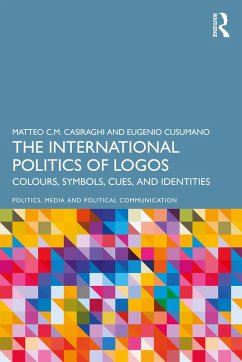Whilst there is growing scholarly interest in visual politics, logos have largely remained hidden in plain sight despite being the most important symbol of a variety of organizations. Visual artefacts, such as logos, play an increasingly central role in politics. Candidates running for office carefully choose the images they share on social media, political parties devise effective brands, and NGOs use visual artefacts for advocacy and advertisement. Visual artefacts are also vital for violent non-state actors, ranging from private military and security companies (PMSCs) to terrorists. This book provides a wealth of data on the logos chosen by a variety of organizations, examining how they vary between actors, across types of organizations, and over time. It offers methodological innovations to the study of logos and visual politics, highlighting the potential of combining quantitative and qualitative methodologies to study the colours, symbols, and types of logos and other visual artefacts. The book examines the role of colours as cues and the causal connection between chromatic choices and ideology, the influence of socialization and norm diffusion dynamics in the choice to showcase (or scrap) specific symbols, and the relationship between branding decisions and the structure and strategies of specific organizations.
This book will appeal to students and scholars of visual politics and visual communication, as well as those researching political parties, PMSCs, and terrorist groups. It will also be of interest to political, security, and marketing professionals.
Dieser Download kann aus rechtlichen Gründen nur mit Rechnungsadresse in A, B, BG, CY, CZ, D, DK, EW, E, FIN, F, GR, HR, H, IRL, I, LT, L, LR, M, NL, PL, P, R, S, SLO, SK ausgeliefert werden.









